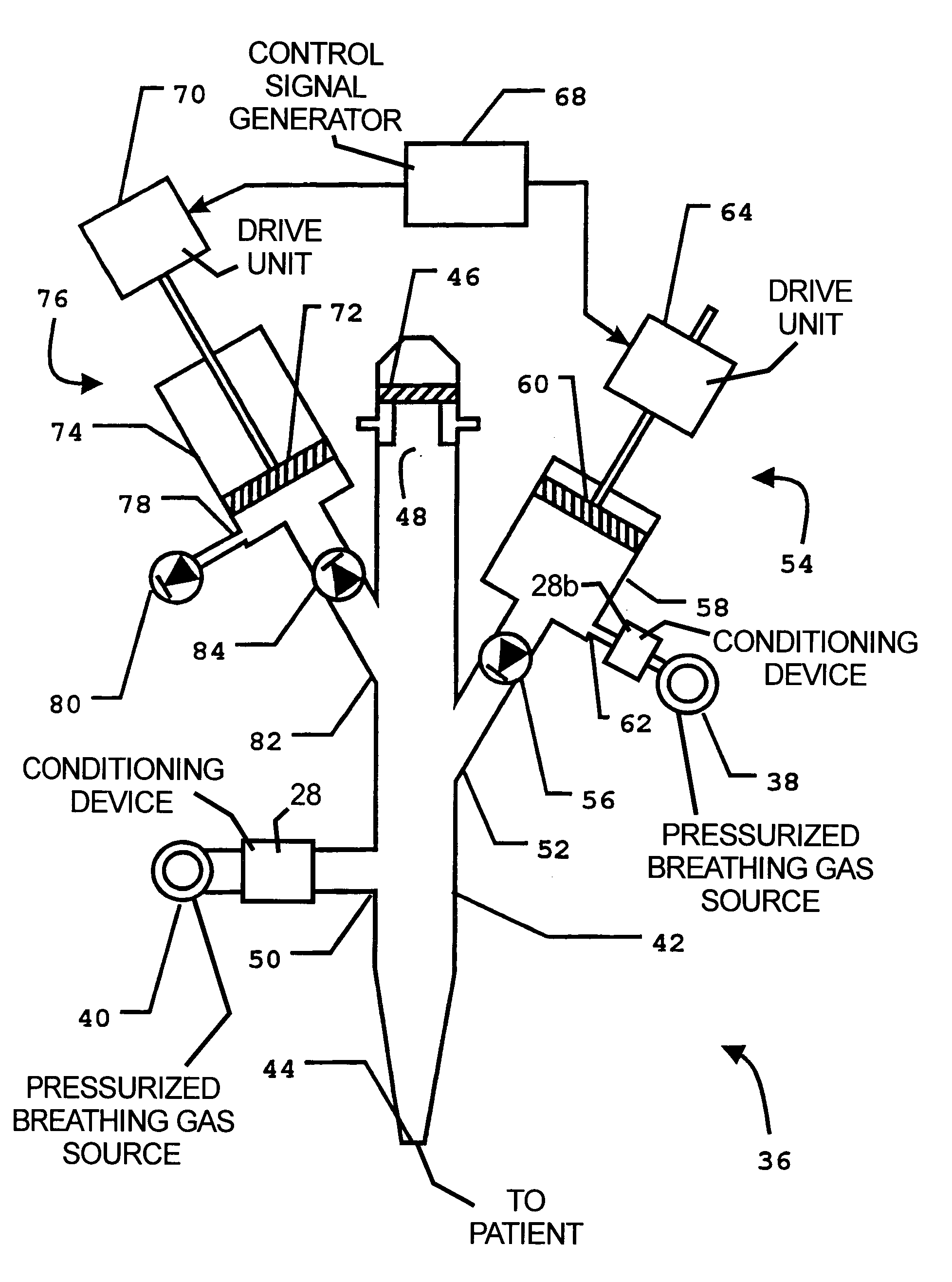High frequency oscillator ventilator
a high frequency oscillator and ventilator technology, applied in the direction of valve details, valve arrangement, operating means/releasing devices, etc., can solve the problem of removing the large moveable element of the known hfo ventilator, and avoid the risk of energy loss in expansion, reduce the risk of expansion, and increase the design flexibility
- Summary
- Abstract
- Description
- Claims
- Application Information
AI Technical Summary
Benefits of technology
Problems solved by technology
Method used
Image
Examples
Embodiment Construction
[0016]In FIG. 1, an HFO ventilator 2 is shown in operative connection to a source of pressurized breathing gas 4. The HFO ventilator 2 is configured to utilize the source of breathing gas 4 both as a bias flow and as a source of an additional gas, as will be described below. The source of breathing gas 4 may conveniently be a conventional mechanical ventilator adapted to provide a continuous flow output.
[0017]The HFO ventilator 2 is provided with a primary conduit 6 that has a patient opening 8 at one end which is intended to be placed in gas communication with a patient's airways, for example by connection to a conventional endotracheal tube (not shown). A vent opening 10 is also provided in the primary conduit 6 through which gas may be vented to atmosphere (as shown) or to a known gas recovery means (not shown). A one-way valve 12 is disposed within the primary conduit 6, proximal the vent opening 10 and is configured to prevent gas entering the conduit 6 through the vent opening...
PUM
 Login to View More
Login to View More Abstract
Description
Claims
Application Information
 Login to View More
Login to View More - R&D
- Intellectual Property
- Life Sciences
- Materials
- Tech Scout
- Unparalleled Data Quality
- Higher Quality Content
- 60% Fewer Hallucinations
Browse by: Latest US Patents, China's latest patents, Technical Efficacy Thesaurus, Application Domain, Technology Topic, Popular Technical Reports.
© 2025 PatSnap. All rights reserved.Legal|Privacy policy|Modern Slavery Act Transparency Statement|Sitemap|About US| Contact US: help@patsnap.com



